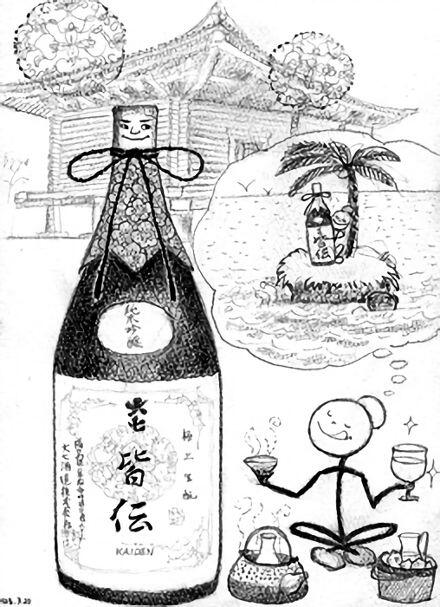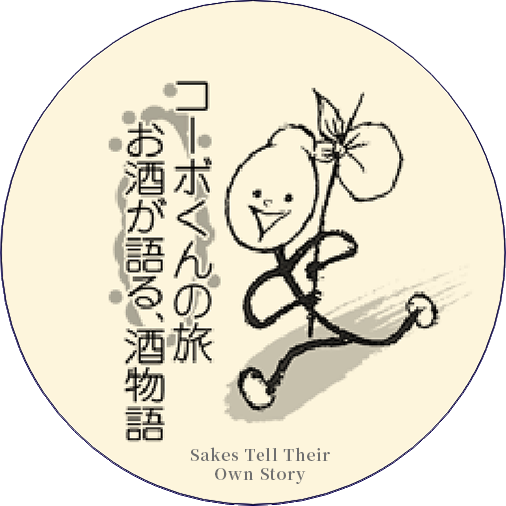| Yeast |
“Now I’m going to visit one of our veterans, Kaiden. Hello, Kaiden!” |
| Kaiden |
“How are you, Yeast?” |
| Yeast |
“You are a real long-seller! When were you born?” |
| Kaiden |
“I was born in 1990. Top class products can be born in two ways. One is to start from a middle-class product and improve the quality until it is top class. The second one is to develop a rare new top class product and based on that technology plan stable production. In my case, the second method was used. One year after the start of Horeki, the first undiluted junmai daiginjo obtained by natural drip, I appeared in the market as a junmai ginjo.” |
| Yeast |
“What was the reason for that?” |
| Kaiden |
“At that time there was no ginjo made with the orthodox kimoto method on the market. Horeki was the first to prove that such a sake was possible. Daishichi took great care to transfer the craft of making Horeki to me, only with a much larger production volume. That is how I was born: fundamentally handcrafted despite my larger volume.” |
| Yeast |
“Your name must be based on the phrase ‘Menkyo Kaiden,’ ‘full mastership.’ |
|
 |
| Kaiden |
“Indeed. It means that the whole of Daishichi’s kimoto method was expressed through me.” |
| Yeast |
“What is that dignified golden design on your label?” |
| Kaiden |
“A good question. This design has a long history. It is based on the arabesque flower pattern (hosoge) found on the imperial articles in the Shosoin treasury in Nara. It signifies the enthusiasm with which Daishichi wants to continue the Japanese traditional culture of the kimoto method.” |
| Yeast |
“Since you went on sale, you’ve continued being a great hit.” |
| Kaiden |
“I’ve had to give up the first place among Daishichi’s ginjo sakes to Minowamon, but as a gift item (1,800ml) of 5,500 yen my sales are quite excellent. I’m not only delicious cold, but my strong point is that I can also be gently warmed. Among those who receive me as a gift are many who like me warm.” |
| Yeast |
“Your sake rice is Gohyakumangoku. What are your characteristics as sake?” |
| Kaiden |
“The Gohyakumangoku sake rice that Daishichi uses comes from the Aizu region in Fukushima and from Toyama prefecture. As rice from the north, it is a bit hard and has a clear taste. After a honey-like sweetness, fresh acidity creates a pleasant aftertaste. By aging I become more graceful and round.” |
| Yeast |
“Now I understand why there are many fans who like your mild and delicious taste. Are you also popular in France?” |
| Kaiden |
“Abroad my brother Masakura is brought out. Thanks to the recommendation of world champion sommelier Olivier Poussier, I was the first sake to be served at a gala dinner of the Sommelier Association of Paris. I fit excellently to the buttery and creamy taste of French food. I am also perfect with seafood and sauteed dishes. Of course I also fit to Japanese kaiseki cuisine or sushi. My ideal serving temperature is 12 degrees Celsius, but in the case of hotpot dishes I’m also very good when gently warmed.” |
| Yeast |
“You’re all-round, fitting to both Western and Japanese food, and possible to be drunk both cold and hot! If I could take just one bottle of sake to a desert island, it would be you!” |
| Kaiden |
“Thank you. We had a nice talk.” |
| Yeast |
“Good luck!” |





